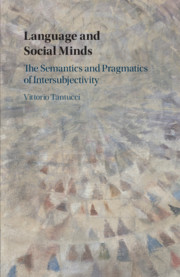3 - Social Cognition in a Usage-Based Model of Language Change
From Immediate (I-I) to Extended Intersubjectification (E-I)
from Part II
Published online by Cambridge University Press: 26 March 2021
Summary
This chapter ‘puts the gradience model into play’ through a corpus-based application of the framework to semantic-pragmatic change in a number of constructions in American English, British English, Mandarin Chinese and other world languages. Each section is centred on a different construction diachronically acquiring new extended intersubjective (E-I) polysemies that progressively arise out of original literal usages. In a number of cases, an intermediate immediate intersubjective (I-I) stage of reanalysis can be formally identified in the sequence of changes of a construction. In some other instances, E-I polysemies may arise directly from literal usages of the construction. Section 3.1 touches upon the universality of intersubjectification as a ubiquitous process of change in the world languages. In Section 3.2, I then illustrate the continuum from immediate to extended intersubjectification of the 干嘛 ganma construction in Mandarin. Among the extended intersubjectified linguistic acts that I analyse in the chapter there is American English common-sense assertions of [you don't want X] (Section 3.3) and the attention-getting functions of the chunk believe it or not (Section 3.4). Extended intersubjectivity also intersects with evidential statements of shared knowledge through the usage of the Mandarin 过 guo construction (Section 3.5) and in assertions of expected agreement with the Mandarin sentence final particle 吧 ba (Section 3.6). Finally, I discuss the existential construction [ there is no X] in British English, which diachronically developed a new intersubjectified function to pre-emptively address what a speaker imagines a specific or generic interlocutor will say as a result of a current turn-taking.
Keywords
Information
- Type
- Chapter
- Information
- Language and Social MindsThe Semantics and Pragmatics of Intersubjectivity, pp. 49 - 108Publisher: Cambridge University PressPrint publication year: 2021
